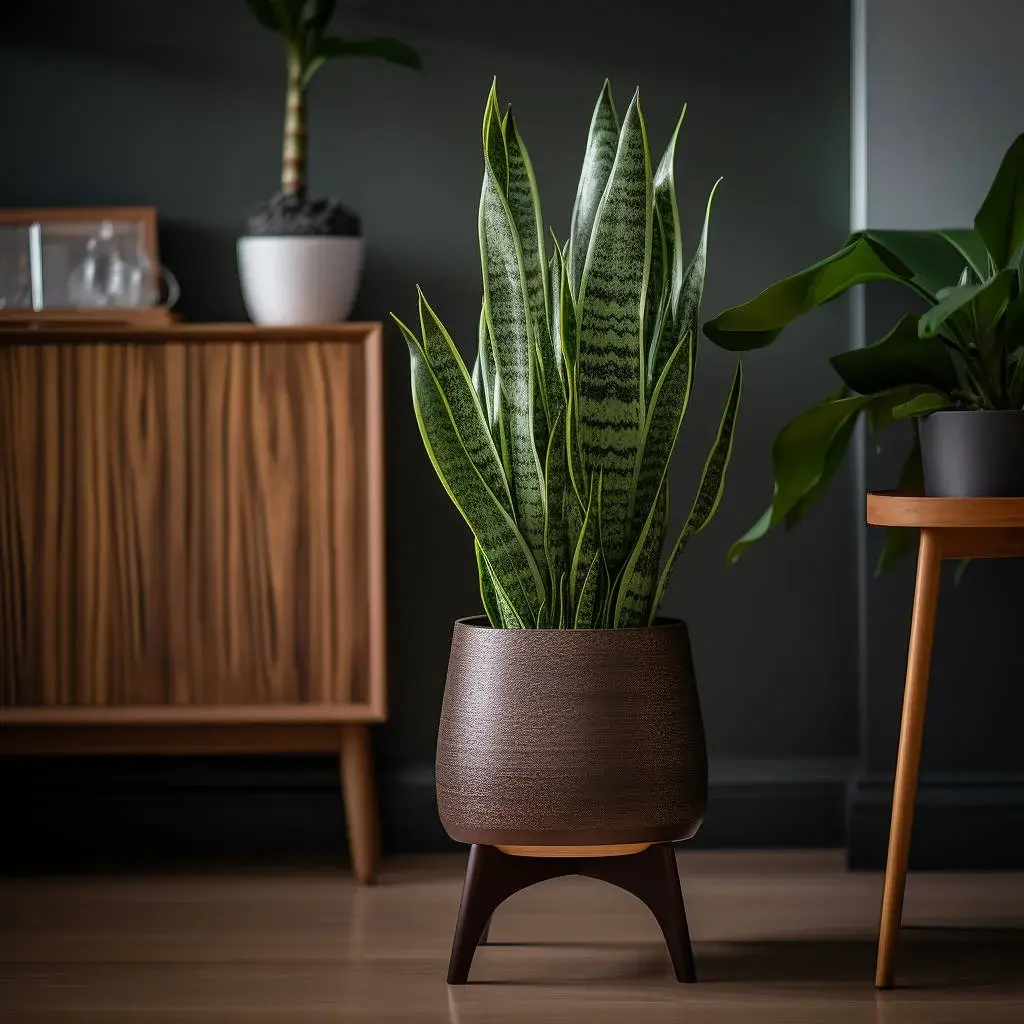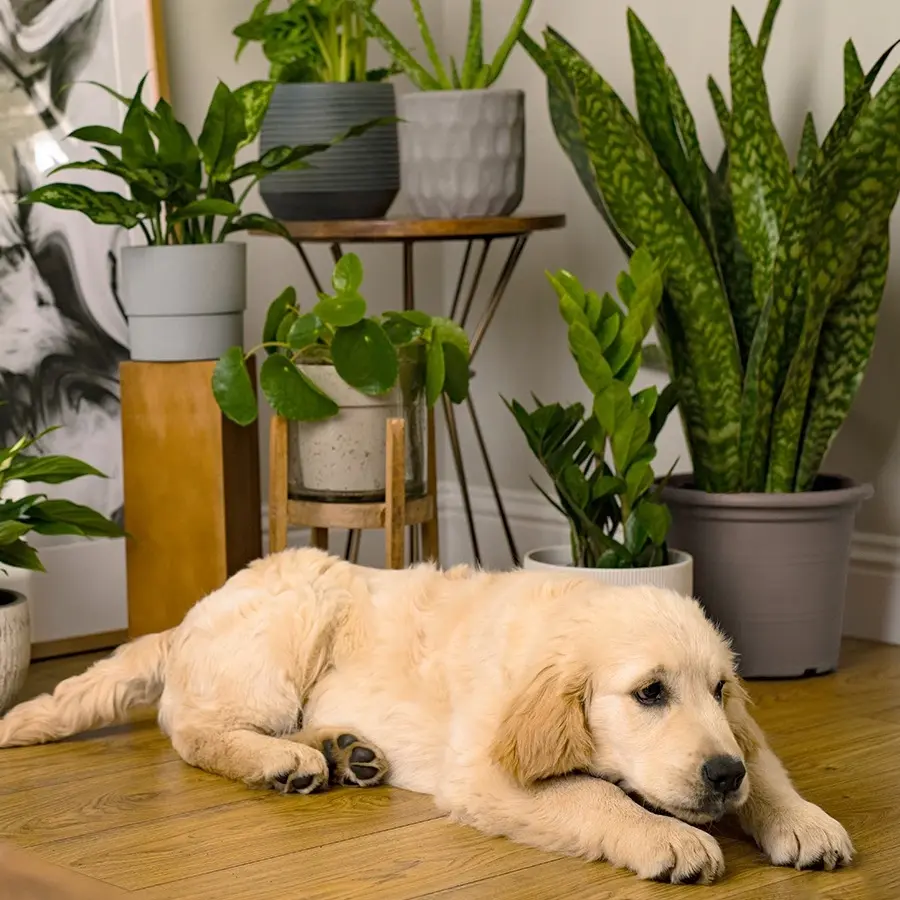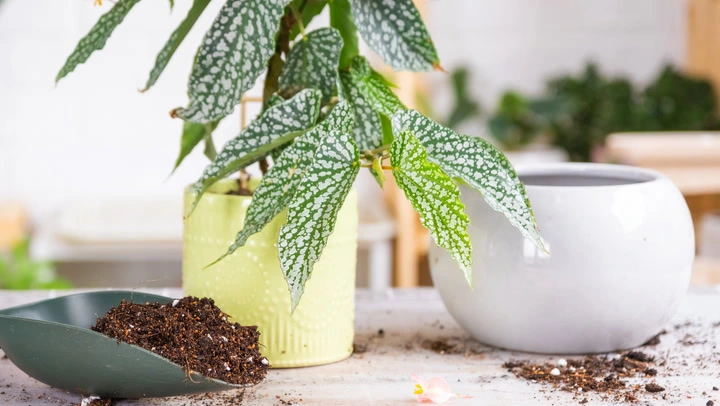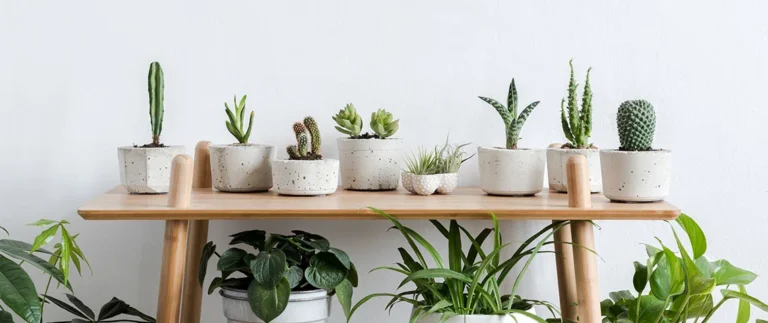Contents
Introduction
Welcome to the world of indoor plants! If you’ve just moved into your first apartment and are thinking about adding some green to your space, you’re in the right place. Plants aren’t just decorations—they bring life, color, and a breath of fresh air into your home. Plus, caring for plants can be a fun and rewarding hobby, especially if you’re new to it.
In this guide, we’ll walk you through everything you need to know to get started with your first apartment plants. From choosing the right types of plants to simple care tips and troubleshooting common problems, we’ve got you covered. Whether you’re aiming to create a lush indoor jungle or just want a few easy-care greenery options, we’ll help you pick plants that fit your lifestyle and your space.
You might be wondering, “Why should I bother with plants?” Well, indoor plants can boost your mood, improve air quality, and even make your apartment feel cozier. They’re also great conversation starters and can be a fun way to express your personality. Plus, even if you’ve never kept a plant alive before, don’t worry—we’ll break everything down into easy, manageable steps.
By the end of this guide, you’ll feel confident in your ability to choose and care for your new green friends. So let’s get started on this green journey and transform your apartment into a vibrant, plant-filled haven!
Choosing the Right Plants for Your Apartment
Alright, so you’re ready to dive into the world of indoor plants—great choice! But before you start picking out every plant that catches your eye, let’s talk about how to choose the right ones for your apartment. Picking the perfect plant is like finding the right roommate: you want to make sure it’s a good fit for your space and lifestyle.
First things first, let’s think about your living space. Every apartment has its own unique conditions that can affect how well plants thrive. The amount of natural light, the space available, and even how often you’re home can all play a role in determining which plants will do best in your home.
Assessing Your Living Space
- Light Conditions
Plants are like people—they have different needs when it comes to light. Some love basking in bright, sunny spots, while others are perfectly content in lower light conditions. Take a look around your apartment and see where the sunlight hits the most. If you have a sunny window, you might consider plants that thrive on bright light. For those shadier corners, there are plenty of low-light-loving plants that will do just fine. We’ll help you match plants to the light available in your home so you won’t have to worry about them getting too much—or too little—sunlight. - Space Constraints
Not every apartment has room for a jungle, and that’s okay! Consider the amount of space you have and how much room you can spare for your plants. Smaller spaces or limited surface areas call for compact plants or those that can be hung or placed on shelves. Think about vertical space or even wall-mounted planters. You can still create a lovely green environment without it feeling cramped.
Plant Varieties for Beginners
- Low Maintenance Plants
If you’re new to plant care, it’s a good idea to start with plants that are known for being low-maintenance. These are the “easygoing” types that don’t need constant attention to thrive. Plants like the Snake Plant, Pothos, and ZZ Plant are perfect for beginners. They’re tough and can handle a bit of neglect, which means you don’t have to worry too much if you forget to water them now and then.
- Pet-Friendly Options
If you have pets, it’s important to choose plants that are safe for them. Some plants can be toxic to animals, so opting for pet-friendly varieties is a smart move. Plants like the Spider Plant and Boston Fern are not only safe for your furry friends but also add a touch of greenery to your space.
So, take a little time to assess your space and lifestyle, and choose plants that will fit right in. With the right selection, you’ll set yourself up for a successful and enjoyable plant-care experience. Ready to pick your new green companions? Let’s move on to the next steps!
Essential Plant Care Basics
Now that you’ve got your plants picked out and they’re settling into their new home, it’s time to get down to the nitty-gritty of plant care. Don’t worry—keeping your plants healthy doesn’t have to be complicated. Let’s break it down into a few easy-to-follow basics so you can keep your greenery looking great without turning into a plant expert overnight.
Watering
- Understanding Watering Needs
Watering is one of the most important parts of plant care, but it can also be one of the trickiest. Different plants have different needs when it comes to water. Some like their soil to stay moist, while others prefer it to dry out between waterings. The key is to get to know your plants’ preferences and find a routine that works. A good rule of thumb is to check the soil before watering—if it feels dry a couple of inches down, it’s time to water. If it’s still moist, wait a bit longer. - Watering Techniques
There are a few ways you can water your plants to keep them happy. The most common method is simply watering from the top of the soil with a watering can. Make sure to water thoroughly, so the water reaches the roots. For plants that need a little extra moisture, you can mist their leaves or use self-watering pots that release water gradually. Just be careful not to overwater, as this can lead to root rot and other issues.
Light Requirements
- Placement and Rotation
Plants need the right amount of light to grow strong and healthy. Some plants love bright, direct sunlight, while others do better in indirect light. Take a look at where you’re placing your plants and try to match their light needs with their location. For those plants that need a lot of light, put them near a window or in a bright spot. Plants that can handle lower light can go in shadier areas. Rotating your plants occasionally helps them grow evenly by exposing all sides to light. - Supplemental Lighting
If your apartment doesn’t get a lot of natural light, don’t worry—grow lights can help! These special lights are designed to mimic sunlight and can be placed near your plants to give them the boost they need. They’re especially useful during the darker months when natural light is scarce.
Soil and Fertilization
- Choosing the Right Soil
The type of soil you use can make a big difference in how your plants grow. For most indoor plants, a good quality potting mix is all you need. There are specific types of soil for different plants, like cacti and succulents, which need well-draining soil to prevent root rot. Make sure to choose a mix that matches your plants’ needs for the best results. - Fertilizing Basics
Fertilizer helps plants get the extra nutrients they need to thrive. There are different kinds of fertilizers—liquid ones you mix with water and granular ones you sprinkle on the soil. Generally, you don’t need to fertilize your plants all the time. Once a month or every few weeks is usually enough. Be sure to follow the instructions on the fertilizer package to avoid overdoing it.
With these basics in mind, you’re well on your way to keeping your plants happy and healthy. Remember, the more you care for your plants, the more they’ll reward you with their vibrant, green presence. Ready to tackle some common plant issues? Let’s keep going!
Managing Common Plant Issues
Even with the best intentions and care, sometimes plants run into problems. But don’t worry—most issues are fixable with a little know-how and attention. Here’s how to tackle some of the most common plant problems you might encounter and keep your green friends thriving.
Pests and Diseases
- Identifying Common Pests
Plants can attract a variety of pests, and while they might seem creepy, they’re usually easy to deal with once you know what you’re looking for. Common pests include spider mites, aphids, and mealybugs. You might notice tiny bugs crawling around the soil or leaves, or see spots and webbing on your plants. Regularly inspecting your plants can help you catch these pests early before they cause serious damage. - Treatment and Prevention
If you spot pests, there are several ways to get rid of them. For most pests, a simple solution of water and mild soap can be effective. Just gently wash the affected areas to remove the bugs. For more stubborn pests, you might need to use specialized insecticidal soap or neem oil. Preventing pests is also key—keep your plants clean, avoid overwatering, and ensure good air circulation around your plants to reduce the risk of infestations.
Symptoms of Plant Stress
- Leaf Problems
Leaves can tell you a lot about how your plant is doing. If you see yellowing, browning, or dropping leaves, it might be a sign of stress. Yellowing leaves often indicate overwatering or poor drainage, while brown tips can be a sign of underwatering or low humidity. Dropping leaves can sometimes be a reaction to sudden changes in environment or a sign of pests. - Solutions and Remedies
To address these issues, start by adjusting your care routine. For yellowing leaves, check your watering schedule and make sure the pot has good drainage. For brown tips, try increasing the humidity around your plant or adjusting your watering. For dropping leaves, ensure your plant is in a stable environment and check for pests. Sometimes, a little tweak in your care routine can make a big difference.
By keeping an eye on your plants and being proactive, you can often resolve issues before they become major problems. Regular check-ins and minor adjustments will help your plants stay healthy and happy. Next up, let’s dive into some advanced care techniques to take your plant care skills to the next level!
Advanced Care Techniques
Ready to step up your plant care game? Once you’ve mastered the basics, there are a few advanced techniques that can help you become an even better plant parent. These tips will help you keep your plants growing strong and healthy, and give you some fun ways to expand your indoor garden.
Pruning and Propagation
- Pruning for Health and Growth
Pruning might sound fancy, but it’s really just about trimming your plants to keep them healthy and looking their best. Removing dead or yellowing leaves can help prevent disease and encourage new growth. For some plants, like the Pothos or Fiddle Leaf Fig, regular pruning helps maintain a nice shape and keeps them from getting too leggy. Use clean, sharp scissors or pruning shears, and cut just above a leaf node (where a leaf attaches to the stem) to promote new growth. - Propagation Methods
Propagation is a fun way to grow new plants from your existing ones. There are a few methods, but one of the easiest is taking cuttings. Simply snip a healthy piece of the plant (usually just below a leaf node), let it callous over for a day or so, and then place it in water or soil to grow roots. Once the roots are well established, you can pot the new plant and watch it thrive. It’s a great way to expand your collection or share plants with friends.
Seasonal Care Adjustments
- Adapting to Seasonal Changes
As the seasons change, so do the needs of your plants. During the warmer months, plants often grow more quickly and may need more water and fertilizer. In contrast, during the winter, many plants slow down and need less water and food. Pay attention to how your plants react to seasonal changes and adjust their care accordingly. For example, you might need to move plants closer to a light source during the shorter days of winter or reduce watering if they’re growing slower. - Winterizing Your Plants
Winter can be tough on indoor plants, especially if your apartment is dry or the temperature fluctuates. To help your plants through the colder months, consider using a humidifier to add moisture to the air, or place a tray of water near your plants to increase humidity. Keep plants away from drafty windows and heating vents, which can cause temperature extremes and dry out the leaves. Regularly check for signs of stress and adjust care as needed.
With these advanced techniques, you’ll be well-equipped to keep your plants thriving year-round and enjoy the satisfaction of watching them grow and flourish. Next, let’s explore some essential tools and resources that will make plant care even easier. Ready to dig in?
Resources and Tools
So, you’ve got the basics down and are ready to dive into the world of indoor plants. To make your plant care journey even smoother, having the right tools and knowing where to find helpful resources can make all the difference. Let’s explore the essential tools you’ll need and some great resources to support your green thumb.
Essential Tools for Plant Care
- Watering Cans, Pots, and Soil Mixers
A good watering can is a must-have for keeping your plants hydrated. Look for one with a long spout to make watering easier, especially for those hard-to-reach plants. When it comes to pots, choose ones with drainage holes to prevent water from pooling at the bottom and causing root rot. As for soil mixers, a small trowel or scoop will help you transfer soil and mix in any amendments. - Pruning Shears and Grow Lights
Sharp pruning shears are essential for trimming and maintaining your plants. They help you make clean cuts and keep your plants looking their best. Grow lights can be a game-changer if your apartment doesn’t get a lot of natural light. They provide the extra light your plants need to stay healthy and grow strong. Look for full-spectrum grow lights that mimic natural sunlight for the best results.
Recommended Resources
- Books and Online Guides
There are tons of great books and online guides out there that can offer detailed plant care advice and inspiration. Books like “The House Plant Expert” by Dr. David Hessayon or “How to Houseplant” by Heather Rodino provide comprehensive information on plant care. Online guides and blogs can offer tips and troubleshooting advice tailored to specific plants or common issues. - Local Plant Stores and Online Communities
Don’t underestimate the value of visiting local plant stores. They often have knowledgeable staff who can provide personalized advice and recommend plants that are well-suited to your home. Online communities and forums are also fantastic resources. Websites like Reddit’s r/plantcare or Facebook plant groups are great places to ask questions, share experiences, and get tips from fellow plant enthusiasts.
With the right tools and resources, you’ll be well-equipped to handle all aspects of plant care and enjoy the process even more. Whether you’re picking up a new gadget or diving into a plant care book, these resources will help you stay informed and inspired. Ready to put everything you’ve learned into action? Let’s move on to the final tips to ensure your plant care journey is a success!
Conclusion
Congratulations! You’re now equipped with everything you need to start and thrive on your plant care journey. By now, you’ve learned how to choose the right plants for your apartment, how to take care of them with essential tips, and how to manage any issues that might come up. It’s a lot to take in, but don’t worry—plant care is as rewarding as it is fun!
Summary of Key Points
Let’s quickly recap what we’ve covered. First, picking the right plants for your space and lifestyle is crucial. Understanding your apartment’s light conditions and choosing plants that match those needs will set you up for success. Once you have your plants, mastering the basics of watering, light, and soil will keep them healthy and thriving. Keep an eye out for common problems like pests or leaf issues, and you’ll be able to address them before they become major issues.
Encouragement and Final Tips
As you continue your plant care journey, remember that it’s all about trial and error. Plants are resilient and forgiving, so don’t stress if you make a mistake or if things don’t go perfectly at first. With a little patience and observation, you’ll find what works best for your plants and your home. Enjoy the process of watching your plants grow and flourish, and don’t be afraid to experiment with new types or techniques.
Plant care can be incredibly fulfilling, and there’s always something new to learn or discover. Whether you’re creating a vibrant indoor garden or just adding a touch of greenery to your space, you’re making your home a more beautiful and welcoming place.
So, go ahead—get those plants and start nurturing your green oasis. Your plants will thank you with their fresh, vibrant leaves and lively presence. Happy planting!



